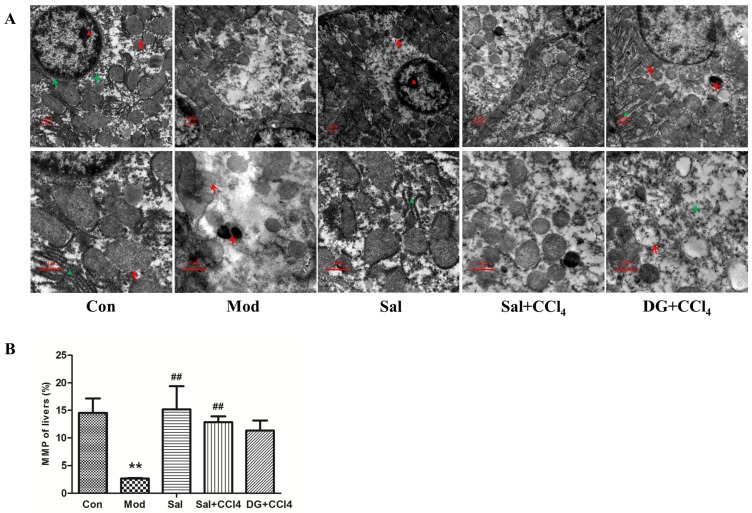Figure 4.
Salidroside protected liver ultrastructure, especially mitochondria in mice. (A) Conditions of liver ultrastructure in different groups: model mice induced by CCl4 and mice treated with single salidroside, salidroside+CCl4, and diammonium glycyrrhizinate+CCl4 (Con, Mod, Sal, Sal+CCl4, and DG+CCl4, respectively). In the Mod group, CCl4 induced ultrastructural damage with decreased chromatin and organelles, partly dissolved ridges and membrane of swollen mitochondria, and increased secondary lysosomes. Salidroside and DG can remarkably alleviate ultrastructural damage, but the former was better than the latter. Single salidroside treatment had no side effect on liver ultrastructure. Red and green arrows marked mitochondria and hepatocytes, respectively. Red and green triangles marked nucleolus and endoplasmic reticulum, respectively. Red and green stars marked secondary lysosome and glycogen, respectively. Magnification: 6000× in the first row, 12000× in the second row. (B) Status of liver MMP in different groups. CCl4 caused excessively low MMP, whereas salidroside effectively normalized the MMP level and even performed better in terms of the overall liver MMP protection ability than that of DG. p < 0.05 was considered statistically significant. **p < 0.05 (groups compared with the Con group) and ##p < 0.05 (groups compared with the Mod group). (CCl4: carbon tetrachloride; MMP: mitochondrial membrane potential).

